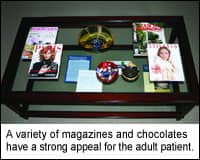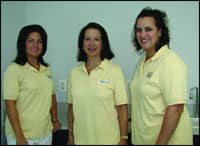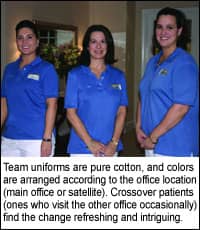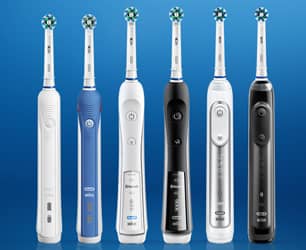by Orhan C. Tuncay, DMD
Why do people buy the cars they do, and how do they select the dealership from which they buy them? This is a question that can be asked in a few words, but takes many pages to explain; I shall attempt to put it in a nutshell. Jaguar, Mercedes-Benz, and Lexus automobiles are all well-made and expensive. This is a basic requirement, just as it is for a successful orthodontic practice.
A practice cannot be successful if it delivers substandard care, just as Jaguar, Mercedes-Benz, and Lexus manufacturers would not have their market share if they didn’t back up their product with warranties and excellent service. But why would a person choose one of these automobiles over the others?
Perhaps, the simplest answer is that people choose cars based on the self-image that the brand promotes in the individual. Some might think British cars are elegant, while others might see German engineering as the best there is; for some others, “understated” is the best message to convey to their circle of friends and associates. As all these luxury cars deliver similar category performances, gas mileage, and comfort, what really matters is how the consumer connects with the brand name.
Why do buyers choose one dealership over another? It is the same car in all the dealerships. Arguably, a convenient location, excellent service, and the image of the dealership are all important. The price of any given automobile in that market does not vary by much from one dealership to another.
What really matters is the hospitality shown to the customer both at the time of the sale and during visits for service.
The iconic, the successful luxury automobile dealer is the one who understands that customers have choices, and that a customer never stops being a customer.
In an adult orthodontic practice, too, the quality of treatment has to be excellent. This is critically important, as without it nothing else will matter.
Catering to the Boomers
Orthodontics for the baby boomer generation has now taken a noticeable portion of the market. To be successful in that business, one has to understand their wishes, desires, fantasies, and expectations.
The silver bullet, however, is the unexpected and unusual care they receive. This generation is accustomed to service. They have been to spas, they have traveled, they have eaten in good restaurants, and they are driving nice automobiles.
And the younger generation following the baby boomers would like to experience similar treats. An excellent, finished orthodontic treatment result brings the ultimate satisfaction to the clinician who created it; it matters less to the patients as long as their chief complaint is addressed. What is critical to most orthodontic patients is the journey they take during treatment. This may not make much sense to the practitioner, but to the patient, hospitality matters most.
What is the automotive corollary? Engineers spend innumerable hours to design the smoothest-shifting transmission or ways to cool the engine oil, yet customers choose a car based on the the number of cup holders it has or how easy it is to load and unload suitcases into the trunk.
A cup holder probably does not cost the manufacturers more than $2, but the more abundant the cup holders, the happier the customer. Indeed, the things that promote happy experiences and memories are not always the most expensive. Thoughtfulness and good manners certainly are not costly.
How does all of this relate to the orthodontic treatment of adults? It would now be safe to state that orthodontics has two subspecialties: pediatric orthodontics and adult orthodontics. It may not be good business to practice both in the same space.
When adults take time from their daily schedule for themselves, they are not on automatic pilot like a parent carrying kids from piano lessons to soccer practice to the dance studio. Instead, this is something they do for themselves. It behooves the practitioner to ensure that they get more than what they had expected and, in turn, have good stories to tell.
Orthodontic treatment with nonfixed appliances is now possible and well-respected. There are different versions, but most notable are the in-house fabricated aligners and the computer-generated aligners. The choice between the two types is a decision to be made by the practitioner.
I have been using the computer-generated variety exclusively. Patients are intrigued by the unusual nature, the “wow” element of that system. They enjoy the experience—oftentimes to such an extent that they bring in their significant friends or family to show off and to share their experiences.
The element of experience, however, extends beyond just being intrigued by the process of invisible orthodontics. My adult patients want their significant others to see and enjoy the ambiance of the office, enjoy the treats in the waiting area, and enjoy the hospitality offered by the staff. This is an extremely powerful marketing tool.
At the initial consultation appointment when they are told their appointments will typically be 6–8 weeks apart, this is the selling point. Once they are in treatment for a while, though, sending them away for 12–14 weeks makes my adult patients sad. They invariably ask if we will miss them. Obviously, our hospitality has become addictive.
The Elements of Hospitality
Hospitality has intangible and tangible elements. The good manners and thoughtfulness of the staff are intangible and come from good upbringing. In-office training enforces it.
Just as in cooking, one has to start with good ingredients to produce a tasty dish or good coffee beans to brew a good cup of coffee.
I have been blessed to work with colleagues who come from good families, who all have good manners and bright minds. As office managers, treatment coordinators, or clinical counselors, all the members of my staff are integral to our hospitality. The more orthodontics and marketing skills they know, the more hospitable we become.
Our morning huddles consist of seminars on a variety of topics: anything from biomechanics to biology to customer-centric conduct. I oftentimes joke that time in the classroom is the occupational hazard of working with a professor.
The tangible elements of hospitality are the simple pleasures and experiences. A refrigerator stocked with a large selection of beverages in unusual containers is an unexpected offering.
Similarly, a bowl of fancy chocolates on the coffee table has now become a conversation piece. Patients take a great deal of delight in discussing the subtle elements of the different flavors of chocolate truffles. They try different flavors every time they are in the office and, at times, they even take home a few.
Patients taste the chocolates while they peruse the colorful magazines next to the chocolate bowl on the coffee table. These are not run-of-the-mill magazines. We choose foreign-language magazines to heighten the patients’ experience of our hospitality. Again, these are not monetarily significant investments, but the payoff in terms of atmosphere is big.
The Role of Consultants
A common practice among business owners is to follow the recommendations of consultants rather than to trust their own intuition. No consultant can know (at least not right away) the personality of an orthodontist better than the orthodontist himself or herself. We all know our likes and dislikes. It is not a good idea to be someone we are not.

One definition of insanity is “doing the same thing over and over and expecting different results each time.” This definitely applies to office design.
If your office is designed by the no-charge design service of a dental supply company, it will be very similar to the few hundred others they had done previously. Why should their most recent layout deliver different results?
Much of the space in an orthodontic practice is used by people other than the orthodontist. It would be a grave mistake for an orthodontist to impose his or her taste upon the users of those spaces.

Orthodontists are specialists and need to work with other specialists. “If you behave like a lady, you will be treated like a lady,” is the advice just about every young woman receives from her mother before leaving the house off to her first date. If the clinician makes the investment of working with a design professional, the result will be professional.
In science, not all evidence is equal. More than 100 papers may be published that claim the same outcome, but if those 100 studies are done incorrectly, their sheer number does not make them correct.

By the same token, there is a distinction between an expert clinician and an experienced clinician. The expert has experience, but more important, he or she thinks, invents, and analyzes every time he or she does anything—whereas the experienced nonexpert repeats his or her performance over and over, yet expects different outcomes.
My wife was the architect who built my practice. She understands space better than anyone else I knew professionally. The feng shui present in the space is critical to heighten the patient experience of our hospitality. My wife knows what it takes to create a good-feeling space. I have also been careful not to impose my taste upon her design unless she asked me.
Obviously, my input was significant when it came to the dental chairs and where I wanted my equipment, instruments, and computer systems, but that was the extent of it. I took my own advice and let an expert professional do the work.
The result has been spectacular to such an extent that after hours, we gather in my office with the other dentists practicing in the neighborhood to discuss our mutual patients (with the aid of electronic images). Not only the patients, but also other practitioners, enjoy being in the space that my wife has created. I married well.
A Final Word
To highlight, in the age of orthodontic subspecialties, pediatric and adult orthodontic practices need to be separate. Without outstanding quality of care, not much else will matter.
With an adult practice, significant attention must be paid to how the space is designed and computerized. An expert architect is the person to create a unique space that is designed to enhance the element of hospitality and make the patients want to keep coming back. The office ambiance and hospitality are powerful marketing tools. Patients want to share it with their friends and significant others. In light of the excitement that it can create among present and future patients, I would certainly say that new or renovated office space is a wise investment.
Orhan C. Tuncay, DMD, is chairman, program director, and professor of the Temple University Department of Orthodontics. He is the editor of three orthodontic journals: Orthodontics & Craniofacial Research, Progress in Orthodontics, and Cases and Commentaries in Orthodontic Technology. He also has private practices in Philadelphia and Fairless Hills, Pa. He can be reached via email at [email protected] or through his Web site, www.rittenhouseortho.com.










